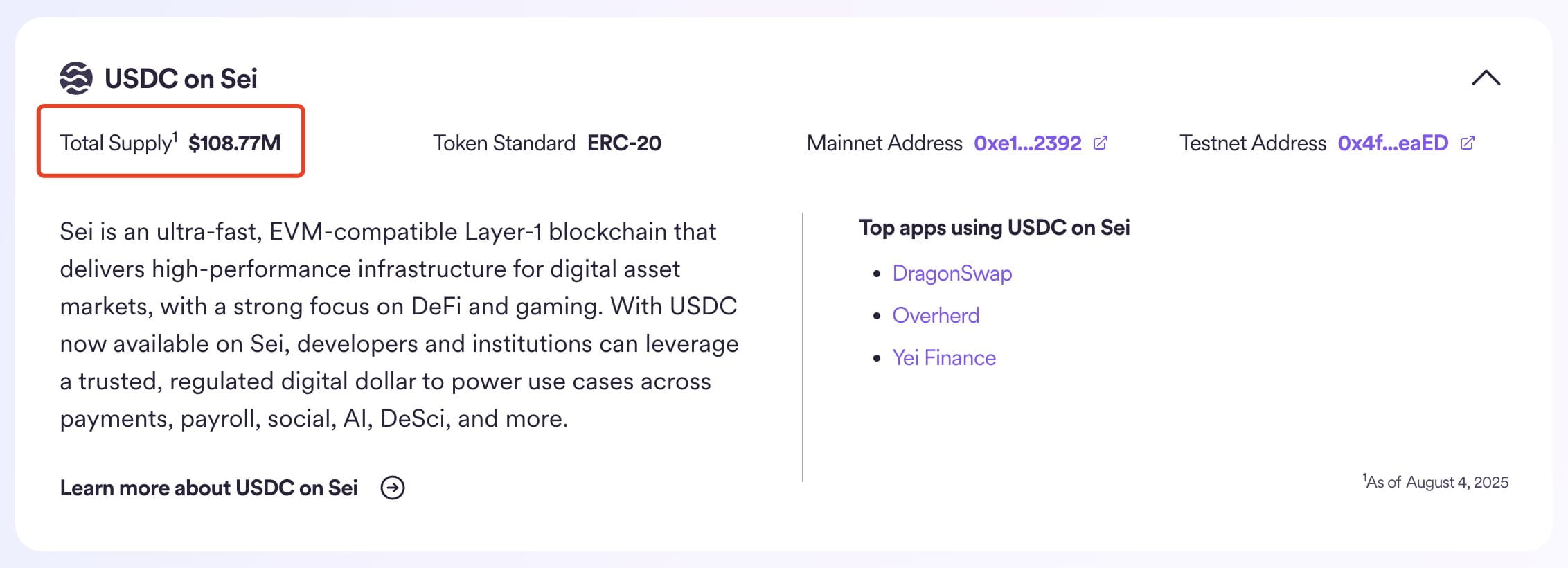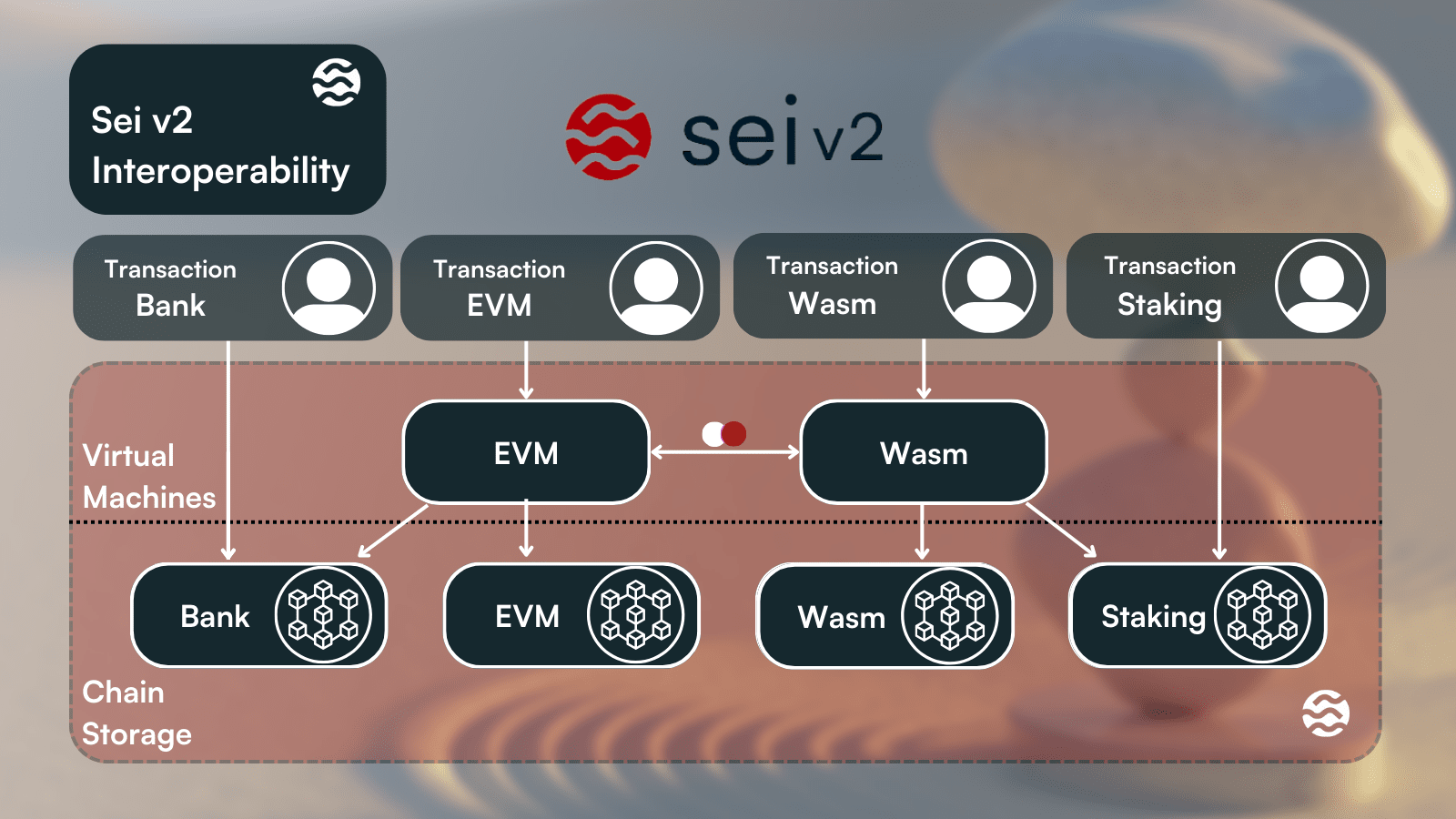Written by Luke, Mars Finance
Recently, news that "Sei Network's daily active user count surpassed Solana for the first time" spread like wildfire in the crypto community, accompanied by a striking data comparison chart, instantly igniting market sentiment. This seems to be another classic narrative of the rise of a "Solana killer." However, when we peel back the temporary fog of data, we discover a story more complex than just a "transition of power" and one that is more worthy of exploration.

The core of this story isn't a fleeting data overtake, but rather how an emerging Layer-1 public chain, through a sophisticated strategic combination, achieved remarkable ecosystem expansion in just a few months. Sei's rise isn't a simple battle for users, but a precise demonstration of infrastructure, capital flows, and technological narratives.
The cornerstone of growth: the “gravitational field” of native USDC
The first and most solid engine of Sei’s recent growth comes from Circle’s official issuance of native USDC.
In the early days of public blockchains, stablecoins were a key indicator of their ecosystem appeal. However, not all USDCs are created equal. For a long time, many public chains relied on "bridged versions" of USDC, essentially wrappers of the original assets. Their security and stability were subject to the risks of cross-chain bridges. Sei, however, chose a more difficult but more correct path—directly collaborating with Circle to introduce officially issued native USDC.

This means that every USDC on Sei is directly backed by Circle and redeemable 1:1 with USD, offering a level of trustworthiness and compliance far beyond that of bridged assets. As Circle emphasized in its official blog post, the integration of native USDC allows "developers and users to benefit from a fully collateralized and regulated stablecoin" and opens up compliant deposit and withdrawal channels for institutions through the Circle Mint service.
The market reaction was immediate. The data doesn't lie: within just 10 days of the launch of native USDC, its issuance on Sei exceeded $108 million. By early August, the total market capitalization of stablecoins on the Sei chain had climbed to $216 million, of which native USDC alone accounted for 81%, with a total supply of nearly $175 million.
What does this speed mean? Let's compare it. According to the on-chain data platform DefiLlama, the total market capitalization of USDC in the Polkadot ecosystem, a long-established cross-chain hub, is approximately $52 million. Sei reached a scale several times that of an established public chain in less than two weeks. Of course, we must remain clear-headed: compared to Layer-2 giants, Sei still has a long way to go—Arbitrum's USDC market capitalization is a staggering $2.44 billion. However, this astonishing initial growth rate is sufficient to demonstrate that native USDC has created a strong capital "gravitational field" for Sei, attracting the first wave of core users and funds seeking a stable and efficient DeFi environment.
Ecosystem explosion: from capital inflow to scene implementation
With a solid capital base, the next step is to make this capital "live." Sei provides a direct landing scenario for the influx of native USDC by introducing key applications.
The lending protocol Yei Finance played a key role in this. Yei Finance wasn't a brand-new creation, but rather a fork of the well-tested Aave V3 protocol in the DeFi world. This strategy was highly pragmatic: it provided users with a familiar, reliable, and rigorously audited platform to park and utilize their USDC assets. For early adopters, security and familiarity were far more appealing than untested "innovation." Meanwhile, native lending protocols like Takara Lend also rapidly emerged, forming the twin lending engines of the Sei ecosystem alongside Yei Finance.
If DeFi protocols are the reservoirs that receive capital, then integration with Backpack is a crucial step in opening the tap. Backpack is a popular multi-chain wallet and exchange within the Solana ecosystem. Its full integration with Sei provides a nearly frictionless on-ramp for Solana's vast user base, allowing them to easily transfer assets and attention to Sei. This is not only a technical integration but also a precise user migration guide, explaining part of the recent surge in Sei activity.
However, not all on-chain activity stems from organic DeFi activity. An anonymous social app called Overherd reveals another side of Sei's growth. As a closed beta socialFi platform, Overherd has designed a clear points and rewards system, where users can earn a stake in future token airdrops by posting content and interacting. This incentive-driven model has undoubtedly contributed to a significant amount of on-chain transactions for Sei, though the value and sustainability of these transactions remain to be seen. This suggests that Sei's growth is a hybrid—a combination of genuine DeFi demand driven by robust infrastructure and potential users attracted through targeted incentives.
Technical Narrative: Parallel EVM, a Different Path to High Performance
Behind all the hype about growth lies Sei's core technology: Parallelized EVM. This is the foundation that allows it to challenge high-performance public chains like Solana.

The blockchain world has long faced a dilemma: choose the breadth of Ethereum's EVM ecosystem or the performance of non-EVM chains like Solana? Sei attempts to offer a third answer. Its core technology, "Optimistic Parallelization," differs from Solana's parallel processing mechanism.
Solana requires developers to explicitly declare the state the transaction depends on (i.e., which accounts will be read or written) when submitting a transaction. The system then processes non-conflicting transactions in parallel based on these dependencies. Sei goes a step further, optimistically assuming that all transactions can be executed in parallel. Only when a conflict is discovered during execution (for example, two transactions modifying the same account simultaneously) will the system roll back and reorder the conflicting transactions.
This design is more user-friendly for developers accustomed to the EVM environment, lowering the barrier to entry for building high-performance applications. Sei's official documentation claims that, powered by its "Dual Turbine Consensus" and a custom-designed parallel database called "SeiDB," the network can achieve sub-second transaction finality and a theoretical TPS (transactions per second) of 12,500. Although peaks of 2,000 to 4,000 TPS are more common in actual operations, this already places it firmly in the top tier of high-performance public chains.
Endgame Outlook: Opening up a new battlefield among giants
Looking back at that initial moment when "daily active users surpassed Solana," Nansen's more macroscopic 7-day average data shows that during the same period, Solana's weekly active addresses (approximately 22.24 million) were still several times higher than Sei's (approximately 4.07 million). This confirms our judgment: that surpassing was a brief "highlight" rather than a complete "disruption."
But this in no way diminishes the significance of Sei's rise. It demonstrates the competitive strategy of the new generation of public chains: no longer a single-dimensional technological competition, but a multi-dimensional battle encompassing infrastructure, ecosystem strategies, capital operations, and technological narratives. Sei, through an ecosystem fund exceeding $100 million, is taking a top-down approach to strongly promote ecosystem development, a stark contrast to Solana's bottom-up approach to community building, relying on a hackathon culture.
In the future, with the launch of more native projects like Ondo Finance's RWA asset USDY, Sei's ecosystem will be further enriched. Its goal may never simply be to become another "Solana killer," but rather to carve out a new battlefield capable of supporting large-scale applications between Ethereum's EVM empire and Solana's high-performance island. For developers and project owners who desire extreme performance but are unwilling to give up the mature toolchain of the EVM ecosystem, Sei undoubtedly offers a highly attractive option. This drama has just begun.




